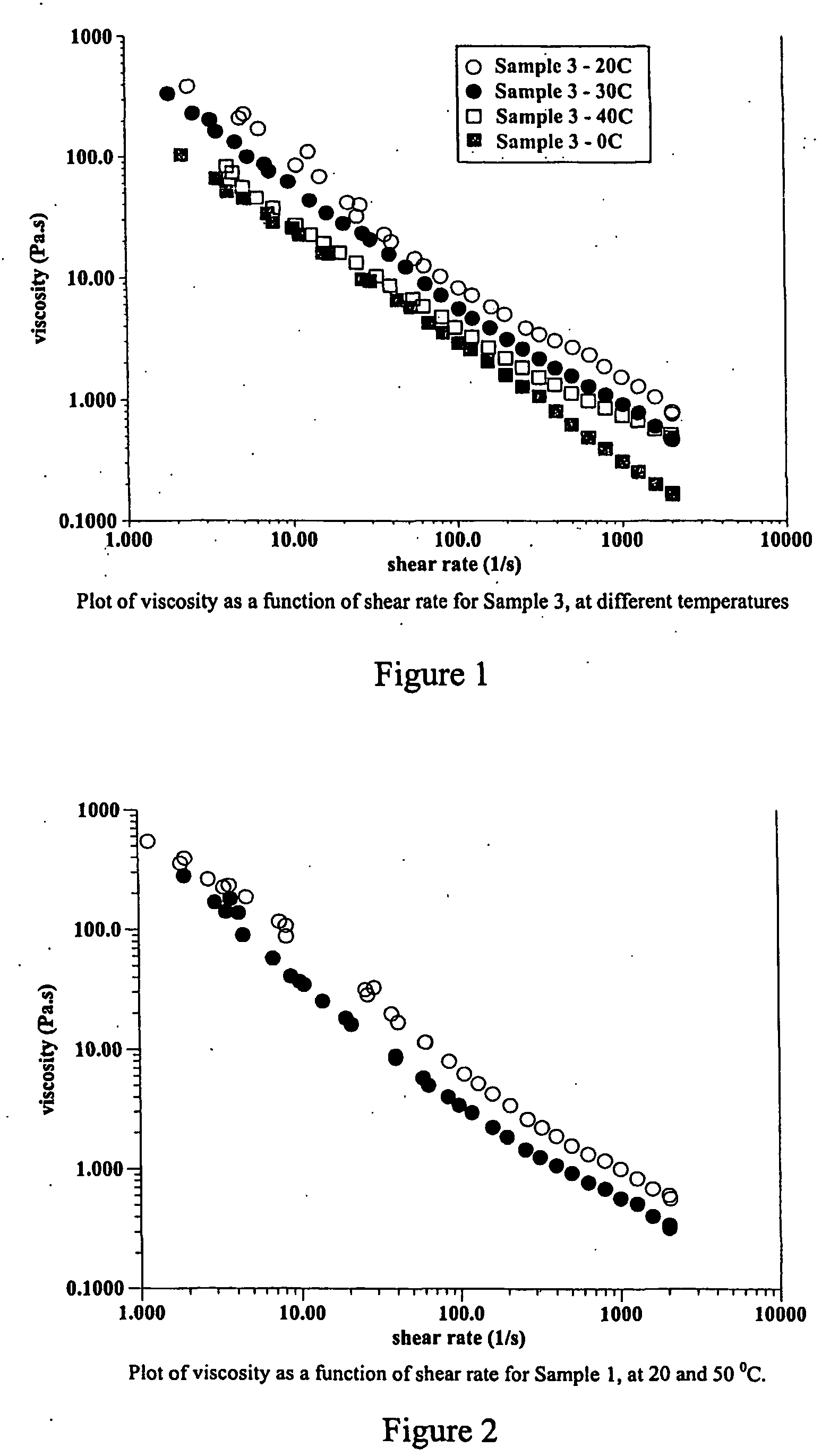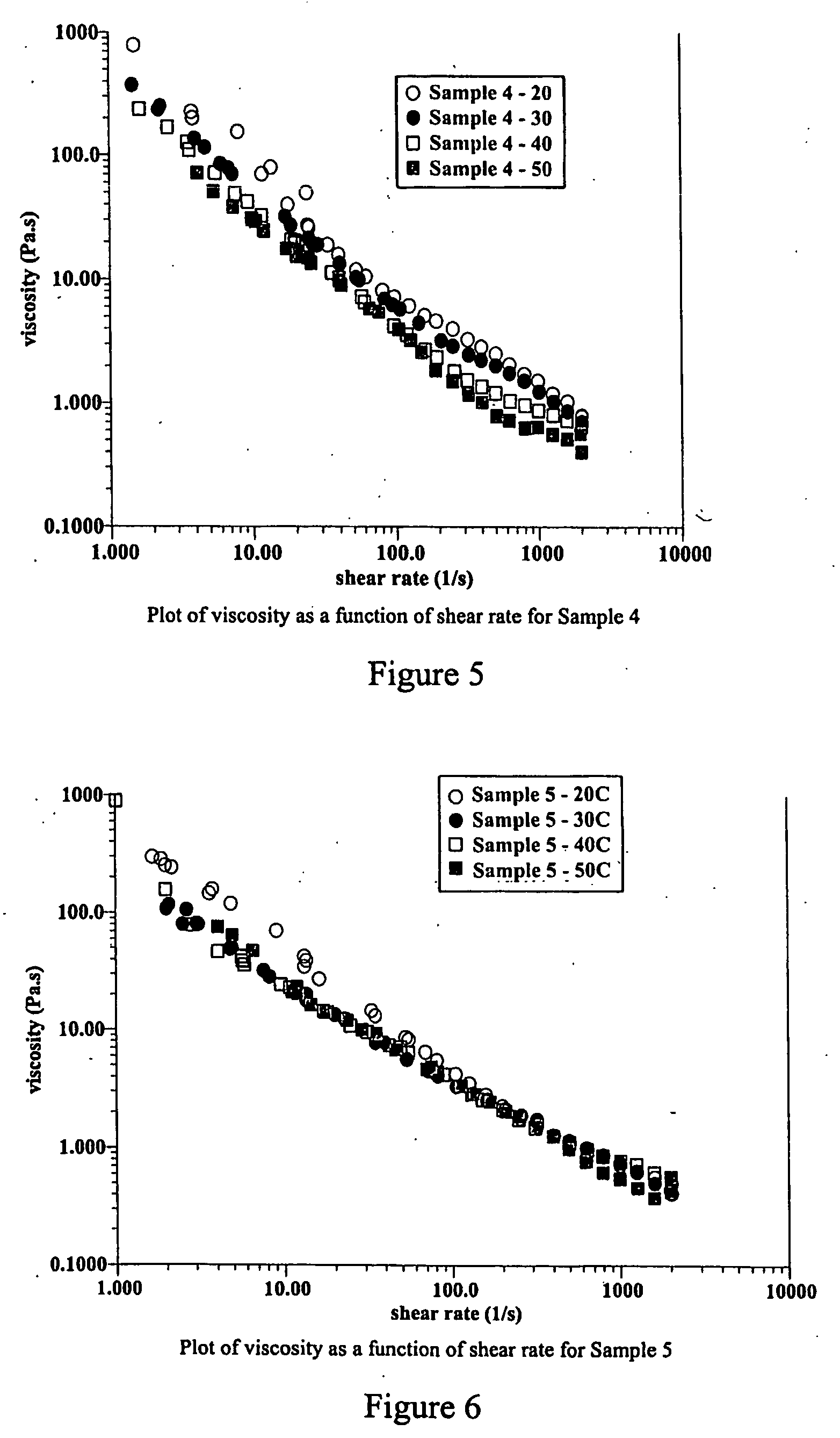Asphalt surface treatment
a technology of asphalt binder and asphalt layer, which is applied in the direction of coatings, special surfaces, constructions, etc., can solve the problems of reducing the ductility of asphalt binder, so as to prevent damage
- Summary
- Abstract
- Description
- Claims
- Application Information
AI Technical Summary
Benefits of technology
Problems solved by technology
Method used
Image
Examples
Embodiment Construction
[0046] Further features objects and advantages of the present invention will become more apparent from the following description of the preferred embodiments and accompanying drawings in which:
[0047]FIGS. 1-10 are graphs illustrating the rheological behaviour of the compositions exemplified;
[0048]FIGS. 11 and 12 are Scanning Electron Microscope (SEM) micrographs of surfaces of Sample 3;
[0049]FIGS. 13-15 are SEM micrographs of the surface of Sample 5;
[0050]FIGS. 16-18 are an Energy Dispersive X ray spectroscopic analysis (EDX) analysis of Sample 5;
[0051]FIGS. 19-21 are magnified cross-sectional views of a dry film of Sample 5;
[0052]FIG. 22 is a magnified view of the interfacial area of pigment and polymer of a dry film of Sample 5;
[0053]FIG. 23 is a magnified view of the bulk area of the pigment and polymer of a dry film of Sample 5;
[0054]FIGS. 24 and 25 are a representative topography of a coating surface of the invention formed on a smooth glass surface;
[0055]FIG. 26 is an...
PUM
| Property | Measurement | Unit |
|---|---|---|
| particle size | aaaaa | aaaaa |
| particle size | aaaaa | aaaaa |
| thickness | aaaaa | aaaaa |
Abstract
Description
Claims
Application Information
 Login to View More
Login to View More - R&D
- Intellectual Property
- Life Sciences
- Materials
- Tech Scout
- Unparalleled Data Quality
- Higher Quality Content
- 60% Fewer Hallucinations
Browse by: Latest US Patents, China's latest patents, Technical Efficacy Thesaurus, Application Domain, Technology Topic, Popular Technical Reports.
© 2025 PatSnap. All rights reserved.Legal|Privacy policy|Modern Slavery Act Transparency Statement|Sitemap|About US| Contact US: help@patsnap.com



